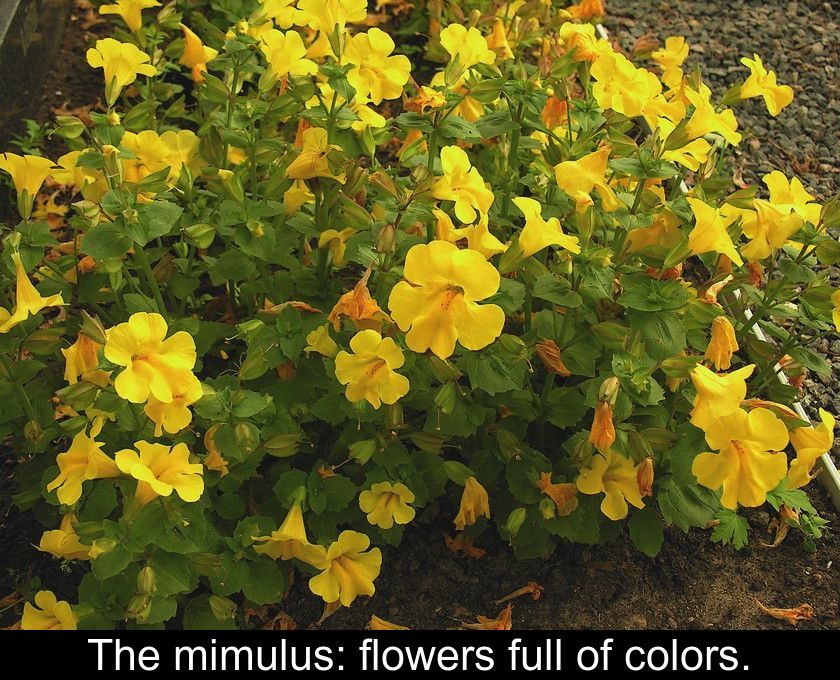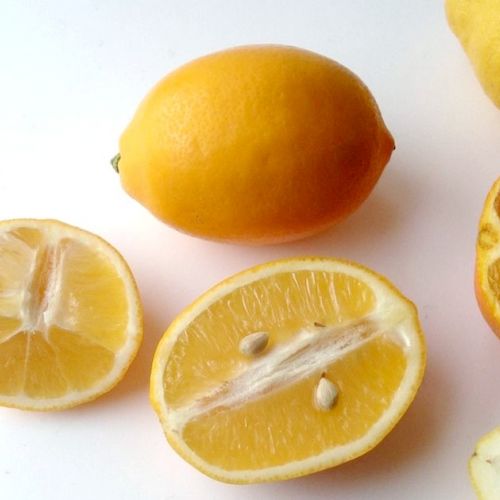The Mimulus: Flowers Full Of Colors.
If you want to add some color to your garden throughout the summer, consider planting mimulus! These pretty trumpet-shaped flowers offer a generous bloom in a variety of colors. Here are 5 things to know about this plant family.
"They will make you see all the colors."
In botany, the genus Mimulus has nearly 180 species of plants that can be annual or perennial and even sometimes shrubby. These flowers in the family Scrophulariaceae (the same family as foxglove and snapdragon) have a variable height (from 30 cm to 1.50 m) depending on the species and an upright, drooping, or spreading habit. Their foliage is generally evergreen in mild climates.
All species have in common trumpet-shaped flowers in a range of colors from white to red, including yellow, orange, and pink. Some varieties are even bicolored, speckled, or marbled.
Among the most common Mimulus species, Mimulus guttatus produces golden-yellow flowers speckled with red while Mimulus cardinalis has bright red flowers with a yellow throat. The species Mimulus ringens presents a completely different color, in shades of purple.
2- They plant in the spring.
If the above description has made you want to adopt mimulus in your garden, know that planting is preferably done in spring between March and May.
Wait until all risk of frost has passed before installing them in the ground or in a pot. In the south of France, you can also plant these cheerful trumpets in autumn.
In any case, choose a sunny but not too hot location and provide them with a light soil rich in humus. Once well established, mimulus will self-seed spontaneously, although it is also possible to divide them in the spring.
Before planting in the ground, you can enrich the soil with compost or well-decomposed manure. For container gardening, mix garden soil with peat and compost.
3- They like to have their feet cool.
The mimulus are flowers that are relatively easy to grow and thrive in any good garden soil, provided that the soil remains moist. The first maintenance tip to know is to water them sufficiently so that the substrate always remains fresh. Also, consider mulching these plants in all seasons to retain moisture at their base.
If you cultivate them in pots, you must water them regularly and provide flowering plant fertilizer once a month during the flowering period. In winter, simply keep the substrate moist.
At the start of vegetation, you can also pinch the shoots to branch out your plants and make them denser. Removing faded flowers helps to extend the flowering period, which usually lasts from May until September.
Note: their significant water needs are one of the disadvantages of mimulus. During periods of summer drought, you will need to cut them back by half so that the plants conserve their strength and can come back even stronger once the heat has passed.
4- They have enemies in the garden.
The flowers of the Mimulus genus are colorful and cheerful, but also a bit fragile. Not only do they fear drought and cold, but they can also be attacked by pests and diseases.
Stay vigilant because slugs and snails are fond of young plants.
These flowers that love a certain humidity can also be attacked by powdery mildew.
5- They are edible and beneficial.
It is often ignored, but plants of the Mimulus genus are edible and have a salty taste even after cooking. It is said that Native Americans used these flowers as a substitute for salt.
In herbal medicine, Mimulus is part of Bach Flowers intended to restore emotional balance. They are used to prepare a floral elixir that is supposed to fight against fear.
Mimulus or Bach Flower No. 20 is a natural remedy that can help regain courage and overcome anxiety such as fear of flying, for example. This elixir can be given to adults, children, and animals, including your fearful dog or cat...






